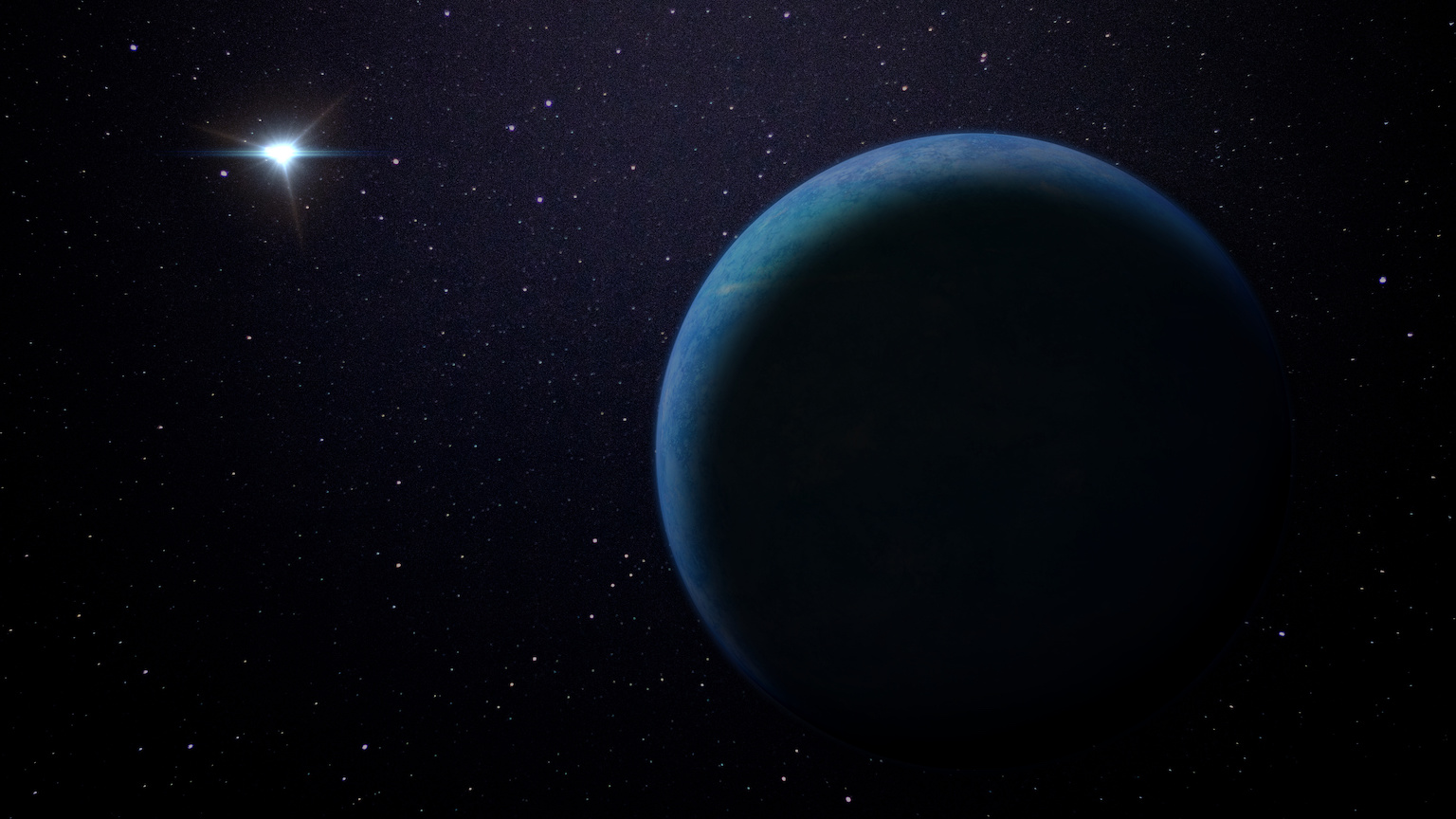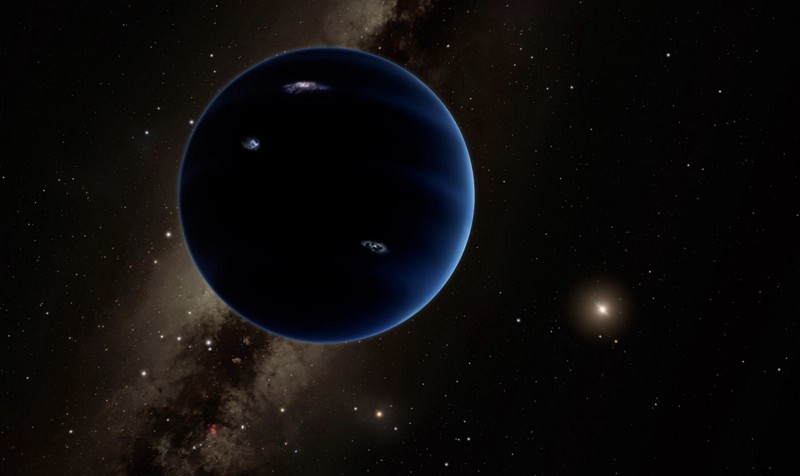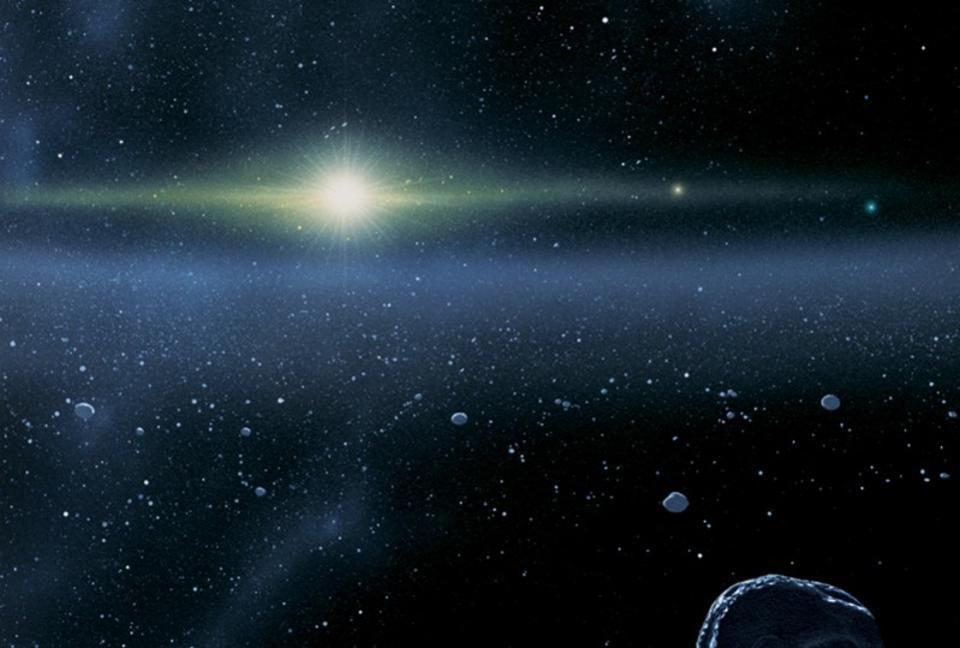Searching for Planet 9

- The former Planet 9, Pluto, was kicked out of the club because it failed to meet the definition of a planet.
- Finding a new Planet 9, if it exists, will not be easy. It is too far away from the Sun and too cold to spot easily.
- Astronomers must apply complex calculations to the data from a telescope mounted on a volcano in the Atacama Desert to seek its faint heat signature.
Our Solar System once possessed nine planets. Then we kicked Pluto out of the club because it was just one of several little things beyond Neptune. Pluto happened to be the largest of them, putting it right on the line between planet and Kuiper Belt speck. The hunt is on for the real Planet 9 — if it exists.
In the past few years, astronomers have hypothesized that one more real planet — about 5-10 Earth masses — lurks far away in the Solar System, roughly 20 times farther than Pluto, invisibly manipulating the orbits of all the Pluto-like objects. Could it be true?
Let there be (diminishing) light
Most of the things we see in the night sky are glowing. The stars radiate light energy into space in all directions, and a tiny amount reaches our eyes and telescopes directly. The Moon, Venus, and Jupiter are obvious exceptions. They dominate Earth’s evening by reflecting just a little bit of the tremendous output of the Sun. However, physics fundamentally limits how many things we can see via reflection.
(As an interesting aside: Large asteroids such as Ceres can reflect enough sunlight to be seen in telescopes, even though they are a few astronomical units (AU) away in the asteroid belt. Littler objects obviously tend to reflect less light. Sometimes we only notice a near miss by a small asteroid after the fact.)
Illumination from a light source decreases with the square of the distance r away from the source (that is, 1/r2). For example, sunlight that is a distance of two times Earth’s orbit (r = 2 AU) is four times dimmer than sunlight at Earth’s orbit (r = 1 AU); a source three times Earth’s orbit away (r = 3 AU) would be nine times dimmer. Thus, as the distance from the Sun increases, sunlight wanes dramatically. At 10 AU, sunlight is 100 times dimmer; at 100 AU, sunlight is 10,000 times dimmer.
The same phenomenon — and same formula — applies to reflected light. In other words, the light reflected from a celestial body diminishes with the distance r according to the formula 1/r2. When we multiply the light loss from the Sun to the celestial body (1/r2) with the loss of the light reflected to Earth (also 1/r2), the result is 1/r4 total light loss. That means the light reflected from an object at a distance of 100 AU is diminished by a factor of 100 million.
This fact means that the number of photons emitted by the Sun that ricochet off the object and then back to us becomes vanishingly small as the object’s distance from the Sun increases. To overcome this, we can instead look for light emanating from the body itself, which will only be attenuated by the 1/r2 factor rather than 1/r4. How?
Every object in the Universe emits varying kinds of electromagnetic radiation depending on how hot it is. Stars radiate in the visible and UV spectrum. Earth radiates in the infrared. Spacetime itself radiates in the radio wave spectrum. For any object that is far enough away, its thermal radiation will appear brighter to us than the sunlight it reflects. So, we look for that radiation, not reflected sunlight.
The search for planet 9
This brings us to the search for Planet 9. A large team of astronomers is using this concept to look for the possible giant planet at the far edges of the Solar System. Their recent paper describes the search, which probed orbital distances of roughly 300-800 AU, at which the amount of sunlight reflected back to Earth is dimmed about 100 billion-fold. For this reason, the team looked instead for radiant emissions from the planet. Being so far from the Sun, this planet is likely to be very cold, perhaps 37-48 K (-393 to -373 F°).
Objects this cold only radiate at very large wavelengths: microwaves and radio waves. The Atacama Cosmology Telescope is built to observe these large wavelengths. This strangely-shaped radio telescope sits at an altitude of over 17,000 feet on the side of a volcano in the Atacama Desert in Chile.
Even using emission rather than reflection, the expected Planet 9 signal still would be so dim that it could not be found in any single image. Further, using long exposure (timelapse or integration in physics parlance) to pick up more photons would result in motion blur of the orbiting body. So instead, the researchers turned to an enormous set of images taken over seven years by the telescope, and they calculated every potentially reasonable Planet 9 orbit that would fall within the image set. For each orbit, they calculated where the planet would be and found the corresponding locations in the images. Then they (metaphorically) stacked the images on top of one another and shifted each one so that the potential locations overlapped. (Perhaps uncreatively, this is called the “shift-and-stack” method.) When added together, the speck of a real planet might congeal from the background of fuzzy noise.
The first results were anticlimactic: negative. But the result was still valuable in that it showed that there is no Planet 9 within part of the range of possible Planet 9 orbits. For a planet with five times the mass of Earth, 17% of orbits were excluded; for a ten Earth-mass planet, about 9% were excluded.
In studies like this, the goal is either to find the object or exclude 100% of the possibilities (that is, declare that it does not exist). The difficulty of seeing things extremely far out in our Solar System is so great that excluding a few percent of the possible planets is an accomplishment all by itself. Further studies will continue to chip away a few more percent at a time. In the meantime, the only Planet 9 candidate is poor Pluto, begging to be reinstated.





